<< Our Photo Pages >> Tinkinswood - Chambered Cairn in Wales in South Glamorgan
Submitted by TimPrevett on Sunday, 31 July 2022 Page Views: 35429
Neolithic and Bronze AgeSite Name: Tinkinswood Alternative Name: Castell Careg, Llech-y-Filliast, Castell Carreg, Castell Carreg, Maes-y-Filiast, Gwal-y-FiliastCountry: Wales County: South Glamorgan Type: Chambered Cairn
Nearest Town: Barry Nearest Village: St Nicholas
Map Ref: ST09217330 Landranger Map Number: 171
Latitude: 51.451378N Longitude: 3.307961W
Condition:
| 5 | Perfect |
| 4 | Almost Perfect |
| 3 | Reasonable but with some damage |
| 2 | Ruined but still recognisable as an ancient site |
| 1 | Pretty much destroyed, possibly visible as crop marks |
| 0 | No data. |
| -1 | Completely destroyed |
| 5 | Superb |
| 4 | Good |
| 3 | Ordinary |
| 2 | Not Good |
| 1 | Awful |
| 0 | No data. |
| 5 | Can be driven to, probably with disabled access |
| 4 | Short walk on a footpath |
| 3 | Requiring a bit more of a walk |
| 2 | A long walk |
| 1 | In the middle of nowhere, a nightmare to find |
| 0 | No data. |
| 5 | co-ordinates taken by GPS or official recorded co-ordinates |
| 4 | co-ordinates scaled from a detailed map |
| 3 | co-ordinates scaled from a bad map |
| 2 | co-ordinates of the nearest village |
| 1 | co-ordinates of the nearest town |
| 0 | no data |
Internal Links:
External Links:
I have visited· I would like to visit
dreamholme SumDoood Geojazz Ellpezz would like to visit
ArchAstro visited on 1st Nov 2025 www.exploreglobe.net/st-lythans--tinkinswood-investigation.html
TheCaptain visited on 25th Apr 2024 - their rating: Cond: 4 Amb: 3 Access: 4 Time for another visit to Tinkinswood burial chamber, where I sit and eat my lunch with lots of birdsong. Since my last time here, there has been a lot of fencing off of the eastern and southern fields, making it impossible to see the other chamber or quarry area. What I remember as a possible avenue to the south seems to have all been ripped up and dumped in a heap. To the north, and taking up most of the parking area, there is a lot of road building going on, presumably to a farm on the north side. So overall, very much not improved.
Antikythera visited on 24th Aug 2023 - their rating: Cond: 4 Amb: 4 Access: 4 Very nice well maintained site with Cadw information board. 5 min walk across grassy fields from road with small parking area. Atmospheric and well preserved even with a large pillar underneath from a 1914 excavation.
Phillwhite visited on 21st Oct 2021 - their rating: Cond: 4 Amb: 4 Access: 4 Wonderfully quiet site. Try to visit in the morning on a sunny day when the sun floods the chamber.
Megalau visited on 26th Sep 2019 - their rating: Cond: 4 Amb: 5 Access: 4
ArchAstro: would like to visit Archaeoastronomy Investigation: Winter Solstice Sunrise (sun at approximate declination -23.4) along the proposed avenue just south of the tomb, looking to the southeast along an azimuth of approximately 131°
(see link below)
www.exploreglobe.net/st-lythans--tinkinswood-investigation.html
trystan_hughes visited on 3rd Jun 2015 - their rating: Cond: 3 Amb: 3 Access: 4
markhewins visited on 3rd Oct 2014 Muddy track, BIG capstone.
Well worth a visit!
coldrum visited on 5th Nov 2011 Lovely site but a bit muddy when I visited.
druid visited on 3rd May 2009 - their rating: Cond: 4 Amb: 5 Access: 4
SolarMegalith visited on 1st Jul 2008 - their rating: Cond: 4 Amb: 4 Access: 4
TheCaptain visited on 11th Jul 2004 - their rating: Cond: 4 Amb: 4 Access: 4 While visiting Tinkinswood with my Dad in 2004, we could hardly fail to be impressed with the size of the capstone. What a lovely tomb this is. But more intriguing were the other rocks and stones in the vicinity. I knew the layout of the main chamber before I visited, but was surprised to find so many other stones and what looked like structures there were in the area. Since my visit, and before I got round to posting this, Sem has also commented on this, and added a few pictures. After visiting the main site, we spent some time looking at the other stones in the area. The first to be noted, while walking across the fields to the chamber from the little parking area, were some large stones in the field on the left (to the south). Closer inspection of this and it looked like this was the remains of another burial chamber, with a fallen dolmen type of structure, with other stones making out what could have been other chamber stones, or some sort of entrance. Looking carefully and the remains of a mound can be made out. Further on towards the main chamber, and again to the left of the pathway, and there are some large stones in a sort of pile in the hedgerow. All around in this region is an outcropping of a thick slab like rock, which has been used to make the structures. It is possible that these stones have just been moved and dumped into the hedgerow as part of a field clearance. However, it is also possible to my eyes, that these are the remains of some sort of tomb. Still further towards the main tomb, at the gateway used to get from one field into that which the main chamber lives in, are a couple of fairly large standing stones. These also look fairly ancient. Is it possible that they some ancient stone remains, or are they simple the remains of an old stile? In the field to the south of here (the main tomb is to the north) I was intrigued by some rock outcrops which seemed to have some form other than just the natural. Investigating this, and I could not fail to notice what seemed like a stone avenue which lead towards the two large standing stones at the stile. The alignment of this avenue would have been directly to the entrance and main forecourt of the main tomb. It is possible that this is not actually a stone avenue, but perhaps a trackway cut into the bedrock (the 2 foot thick slabstone) with what looks like stone uprights being remnants of the slab. But why would anyone do this ? In the wooded area surrounding the main chamber, there appear to be many more stones, either standing or fallen. Some of these are more clearly seen from the fields around the outside of the fenced region of the large barrow remains. One of the more fascinating things I found is in a little wooded copse to the southeast of the main chamber, between the "avenue" field, and the "dolmen" field. Inside this dark little wood, the natural rock outcrop can be seen clearly at the surface of the ground, as about a two foot thick slab, horizontally positioned on the surface. The real interesting thing here is that this slab has been quarried at some time in the distant past, perhaps by being burrowed underneath before breaking large slabs off. Well by now I might have been imagining things, but I would have put money on one large bit of the slab that was removed being a match for the massive Tinkinswood capstone. It seems that not only the size and shape were a good match, but also the thickness. Had I found the quarry from where the massive stones of the chamber were taken. It was lovely to think so. The area Tinkinswood chamber is obviously so much more than just the large barrow and tombs. Perhaps the entire local landscape is of monumental importance. It would be nice to know if anything else is known.
Baruc visited on 1st May 1979 - their rating: Cond: 3 Amb: 4 Access: 4
coin visited - their rating: Cond: 3 Amb: 3 Access: 4
GenineNeale visited - their rating: Cond: 5 Amb: 4 Access: 4
Andy B AngieLake TimPrevett sem DrewParsons have visited here
Average ratings for this site from all visit loggers: Condition: 3.82 Ambience: 3.91 Access: 4
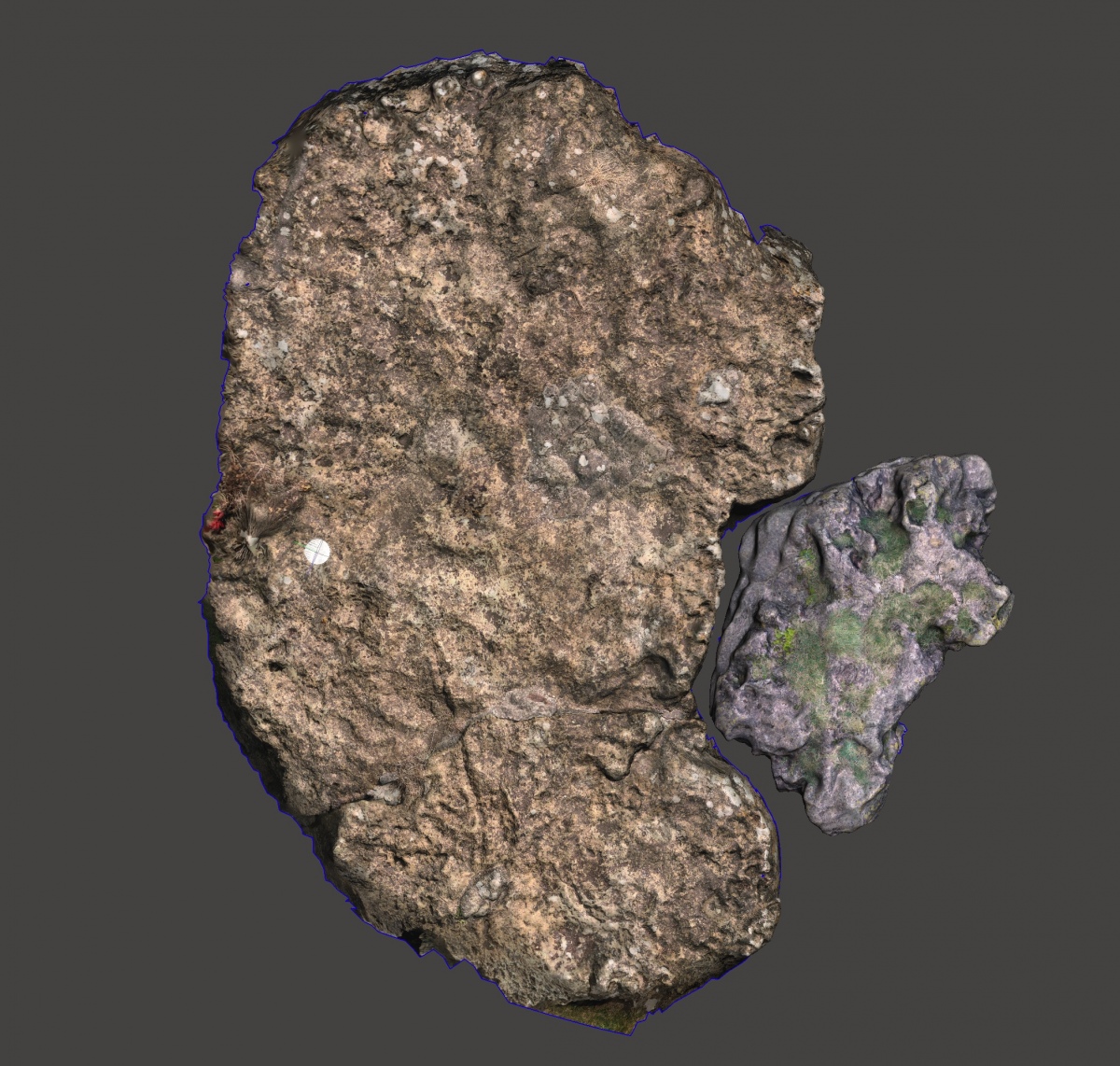
Access: take A 48 to St Nicholas. In the village take minor road signed Dyffryn for 500 metres. Cairn is across field on the right (sign at stile).
For more information see Coflein NPRN 94510 which tells us this is: " A chambered long cairn, c.40m ENE-WSW by 17.5m and 0.9m high, defined by drystone walling, with a megalithic chamber opening onto a recessed forecourt at the ENE end. Excavated 1914, finds included a range of Iron Age- medieval material indicating secondary use. A range of stones lie to the E & SE of this monument (NPRN 307726)".
The Journal of Antiquities also includes a page for this site - see their entry for Tinkinswood Burial Chamber, St Nicholas, South Glamorgan, Wales, which includes photographs, a drawing of the cairn, a description, directions for finding the site, and quotations from different sources of information. Their entry also includes reference sources and additional websites to check for more information, and adds: "the long and quite enormous capstone weigh(s) 40 tons or more, and also an unusually low entrance (portal)".
In the cliffhanger of a 2021 episode of Doctor Who, Jodie Whittaker as the Doctor gets transformed into a Weeping Angel at Tinkinswood burial chamber. See the comments on this page for Andy B's guide to when megalithic and prehistoric sites have featured in Doctor Who through the years
Note: Mark_in_Wales has made photogrammetry models of the capstones of both Tinkinswood and Coed-Y-Cwm about 1km away. Although they don't seem to be exactly the same rock type, look how they match up!
You may be viewing yesterday's version of this page. To see the most up to date information please register for a free account.
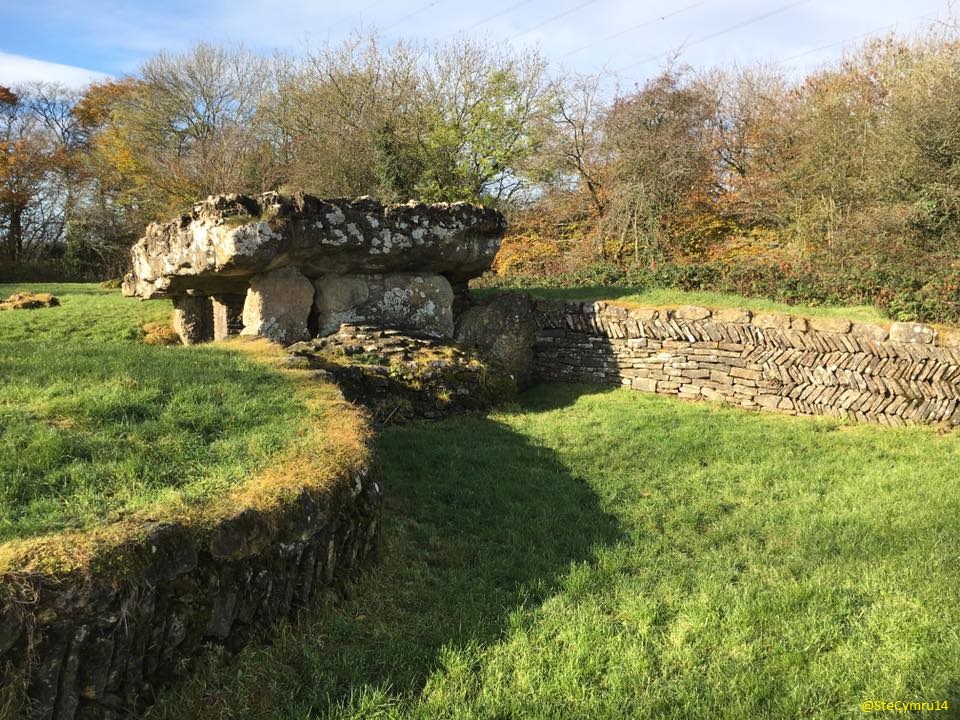
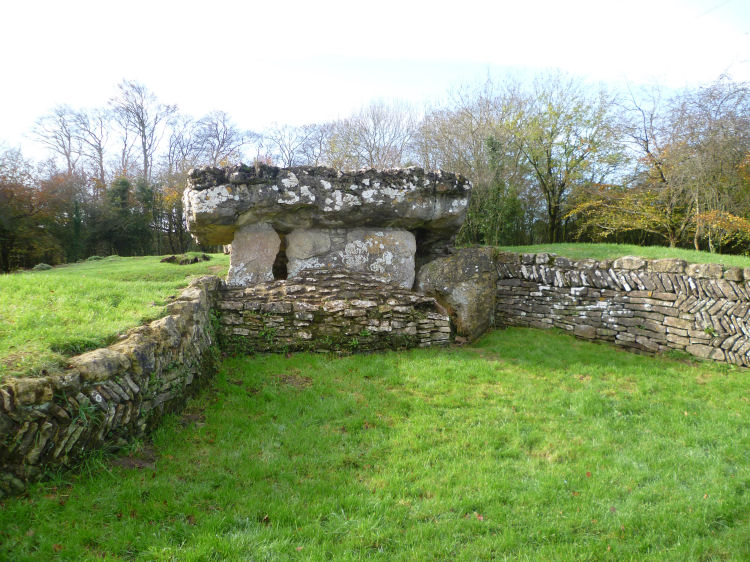



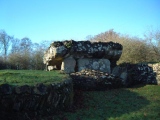
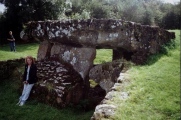
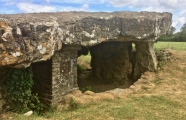

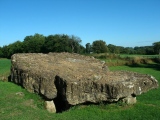

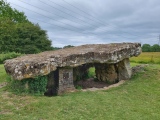

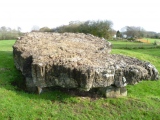
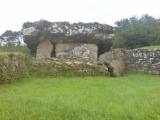

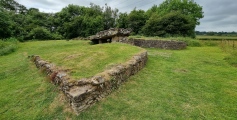



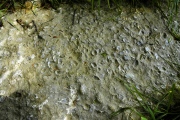
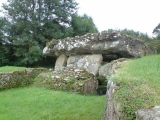
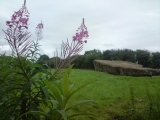
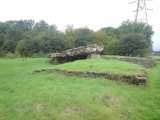
These are just the first 25 photos of Tinkinswood. If you log in with a free user account you will be able to see our entire collection.
Do not use the above information on other web sites or publications without permission of the contributor.
Click here to see more info for this site
Nearby sites
Key: Red: member's photo, Blue: 3rd party photo, Yellow: other image, Green: no photo - please go there and take one, Grey: site destroyed
Download sites to:
KML (Google Earth)
GPX (GPS waypoints)
CSV (Garmin/Navman)
CSV (Excel)
To unlock full downloads you need to sign up as a Contributory Member. Otherwise downloads are limited to 50 sites.
Turn off the page maps and other distractions
Nearby sites listing. In the following links * = Image available
42m SE 134° Tinkinswood standing stones* Standing Stones (ST09247327)
86m SE 144° Tinkinswood avenue* Stone Row / Alignment (ST09267323)
120m E 84° Tinkinswood quarry* Ancient Mine, Quarry or other Industry (ST09337331)
123m ESE 103° Tinkinswood 2* Burial Chamber or Dolmen (ST09337327)
126m ENE 70° Tinkinswood outliers* Rock Outcrop (ST09337334)
1.2km WNW 293° Coed-Y-Cwm* Chambered Cairn (ST08117378)
1.3km SE 138° St Lythans* Chambered Tomb (ST10097230)
1.4km NW 304° Cottrell Park Standing Stone* Standing Stone (Menhir) (ST0804574124)
1.5km WNW 289° Redland Farm Standing Stone (Menhir) (ST07817382)
1.5km ENE 75° St Lythans Down Round Barrow* Round Barrow(s) (ST10717367)
1.6km NNW 349° St Nicholas' Well (Glamorgan)* Holy Well or Sacred Spring (ST08937484)
1.7km ENE 64° Vianshill Round Barrow(s) (ST10717401)
2.0km E 83° Marsyd Round Barrow(s) (ST11217352)
2.2km SE 129° Goldsland Wood Cave Cave or Rock Shelter (ST109719)
2.3km E 81° Quarrymen Stone* Modern Stone Circle etc (ST115736)
3.9km NW 311° Ffynnon Deilo* Holy Well or Sacred Spring (ST0633975904)
4.1km E 79° Coed-y Cymdda Hillfort (ST13297398)
4.5km ENE 67° Caerau (Cardiff)* Hillfort (ST13377498)
4.6km SE 133° Pencoetre Wood Barrow Round Barrow(s) (ST125701)
4.6km NNE 31° Museum of Welsh Life, St Fagans* Museum (ST117772)
4.7km NE 34° St Fagan's Well Holy Well or Sacred Spring (ST11917712)
4.7km E 89° Cwrt-yr-ala Hillfort (ST139733)
4.7km SW 223° Castle Ditches Fort* Hillfort (ST059699)
5.1km N 9° Sant-Y-Nyll Round Barrow(s) (ST10077829)
5.7km SW 223° Pen Onn Farmstead Ancient Village or Settlement (ST053692)
View more nearby sites and additional images



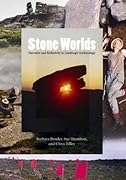


 We would like to know more about this location. Please feel free to add a brief description and any relevant information in your own language.
We would like to know more about this location. Please feel free to add a brief description and any relevant information in your own language. Wir möchten mehr über diese Stätte erfahren. Bitte zögern Sie nicht, eine kurze Beschreibung und relevante Informationen in Deutsch hinzuzufügen.
Wir möchten mehr über diese Stätte erfahren. Bitte zögern Sie nicht, eine kurze Beschreibung und relevante Informationen in Deutsch hinzuzufügen. Nous aimerions en savoir encore un peu sur les lieux. S'il vous plaît n'hesitez pas à ajouter une courte description et tous les renseignements pertinents dans votre propre langue.
Nous aimerions en savoir encore un peu sur les lieux. S'il vous plaît n'hesitez pas à ajouter une courte description et tous les renseignements pertinents dans votre propre langue. Quisieramos informarnos un poco más de las lugares. No dude en añadir una breve descripción y otros datos relevantes en su propio idioma.
Quisieramos informarnos un poco más de las lugares. No dude en añadir una breve descripción y otros datos relevantes en su propio idioma.